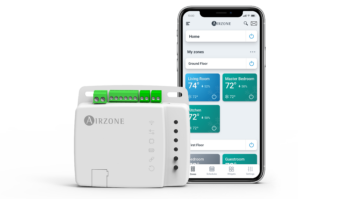
Research from Statista.com shows the average age of vehicles on the road is pushing 12 years old while less than one-third of vehicles are five years old or newer.
Consumer Technology Association research, meanwhile, shows that smartphone adoption among Americans has risen past 80 percent and is still rising. This means there is an ample consumer base for 12-volt aftermarket solutions that integrate smartphones into older vehicles.
Given the rapid pace of app development vs. the comparatively glacial, once-a-year roll out of new OEM head units, consumers will continue to demand that their smartphones, with all their capabilities, be integrated using aftermarket technology.
See also: Scosche Brings V2V To All With Nexar Dash Cam
Smartphone integration solutions like Apple CarPlay and Android Auto were once found only on high-end aftermarket head units. Cost reduction in the needed hardware has now migrated these features to mid-tier units. The same applies to connectivity solutions between the phone and the head unit. Most are wired, but wireless/Wi-Fi versions are appearing. This trend should also migrate downward, as well as spark other uses.
Some aftermarket head units actually dock the smartphone prominently and utilize the phone’s touchscreen to display and control head unit functions. Using the phone as a crucial component can certainly lead to additional wireless, app-based opportunities—like wireless cameras with a matching app for example. However, Advanced Driver Assistance Systems (ADAS) require an even higher level of product quality, risk assessment, review of local, state and federal laws and careful installation so any expansion in this area needs to be explored thoroughly.
Another growing trend is using a phone’s apps and voice assistant through the head unit to connect to a smart home system. The key in-vehicle function right now is voice control. This enables the user to check status and control compatible devices, while keeping their eyes on the road and hands on the wheel. This is an area ripe for expansion, but in-vehicle usage must not compromise driving safety.
See also: Waymo Isn’t Building Cars; It’s Building Drivers
This year marks the roll out of the next-generation 5G networks and cellphones. The faster network speed will certainly result in more productivity and entertainment options than ever before possible in the mobile environment and could lead to more advances in both OEM and aftermarket-equipped vehicles.
Grab-and-go solutions for Bluetooth or simple, wired audio streaming and hands-free calling haven’t lost traction either. Products that plug in through the aux port and FM modulators continue to provide low-cost, basic solutions. Demand for multi-functional mounts for Qi chargers is on the increase. Qi charging devices themselves will also prove popular in the aftermarket, once they are easier to install and more affordable.
The market exists for fully integrated in-vehicle solutions as well as stand-alone or smartphone-based solutions. But what makes the smartphone so powerful is the availability of apps that add new consumer features and content almost continuously. Drivers will continue to seek out ways to add those smartphone features — without having to buy a new car. This ensures exciting market opportunities for both installers and 12-volt aftermarket companies.













